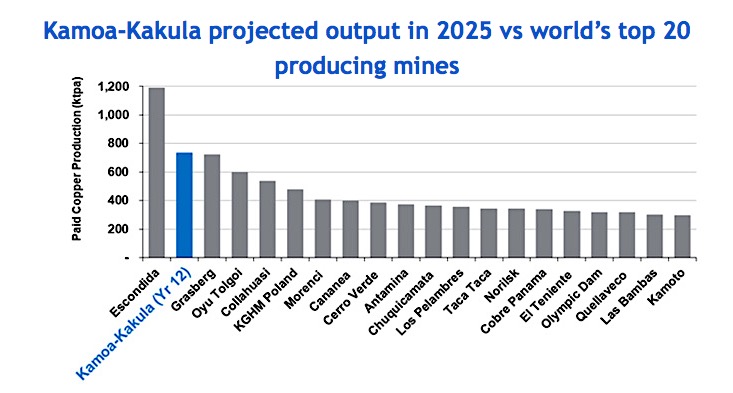Canada’s Ivanhoe Mines (TSX:IVN) has unveiled a fresh set of mind-boggling figures from its flagship copper project in the Democratic Republic of Congo, confirming that the already large asset has room to grow.
The updated mineral resource estimate (MRE) puts the combined Kamoa-Kakula project at 423 million tonnes grading 4.68% copper, at a 3% cut off. Indicated mineral resource, in turn, now stands at 1.4 billion tonnes grading 2.7% copper, at a 1% cut-off.
The 400 km2 mining concession comprises two large, near-surface, flat-lying, stratiform copper deposits. One of them, Kakula, is being fast-tracked to commercial production, with the initial 3.8-million-tonne-a-year mining operation scheduled to produce first concentrate in the third quarter of 2021.
Indicated mineral resources at the Kamoa deposit, discovered by
Ivanhoe geologists in 2008, now total 760 million tonnes grading
2.73% copper, containing 45.8 billion pounds of copper.
“We see excellent opportunity to add further shallow, higher-grade copper resources in the northern portion of the mining licence,” the company’s vice president for resources, George Gilchrist, said in a statement.
The Vancouver-based miner has been working on Kamoa-Kakula for more than ten years. In 2015, China’s Zijin Mining Group got on board, becoming Ivanhoe’s partner in the project. Citic Metal, another Chinese firm, followed suit in 2018, becoming Ivanhoe’s top shareholder.

Over more than two decades, billionaire
Robert Friedland and his team have made some of the biggest mineral discoveries
in recent times.
Together with finding Africa’s largest copper deposit to date, other projects under the executive’s belt include building the Oyu Tolgoi copper- gold mine in Mongolia and discovering the Voisey’s Bay nickel deposit in Canada, which he sold in 1996 for more than $3 billion. Ivanhoe is also developing a platinum mine in South Africa.
Once fully developed, the mining
complex in the DRC could produce 382,000 tonnes of copper a year during the
first 10 years, climbing to 700,000 tonnes of copper after 12 years of operations.
Analysts say the giant project, believed to have the potential to become the world’s second-largest copper mine, could restore the DRC’s historical position as one of the world’s top copper producing countries.
Kakula would be the first of at
least three mines planned for the Kamoa-Kakula copper complex.
